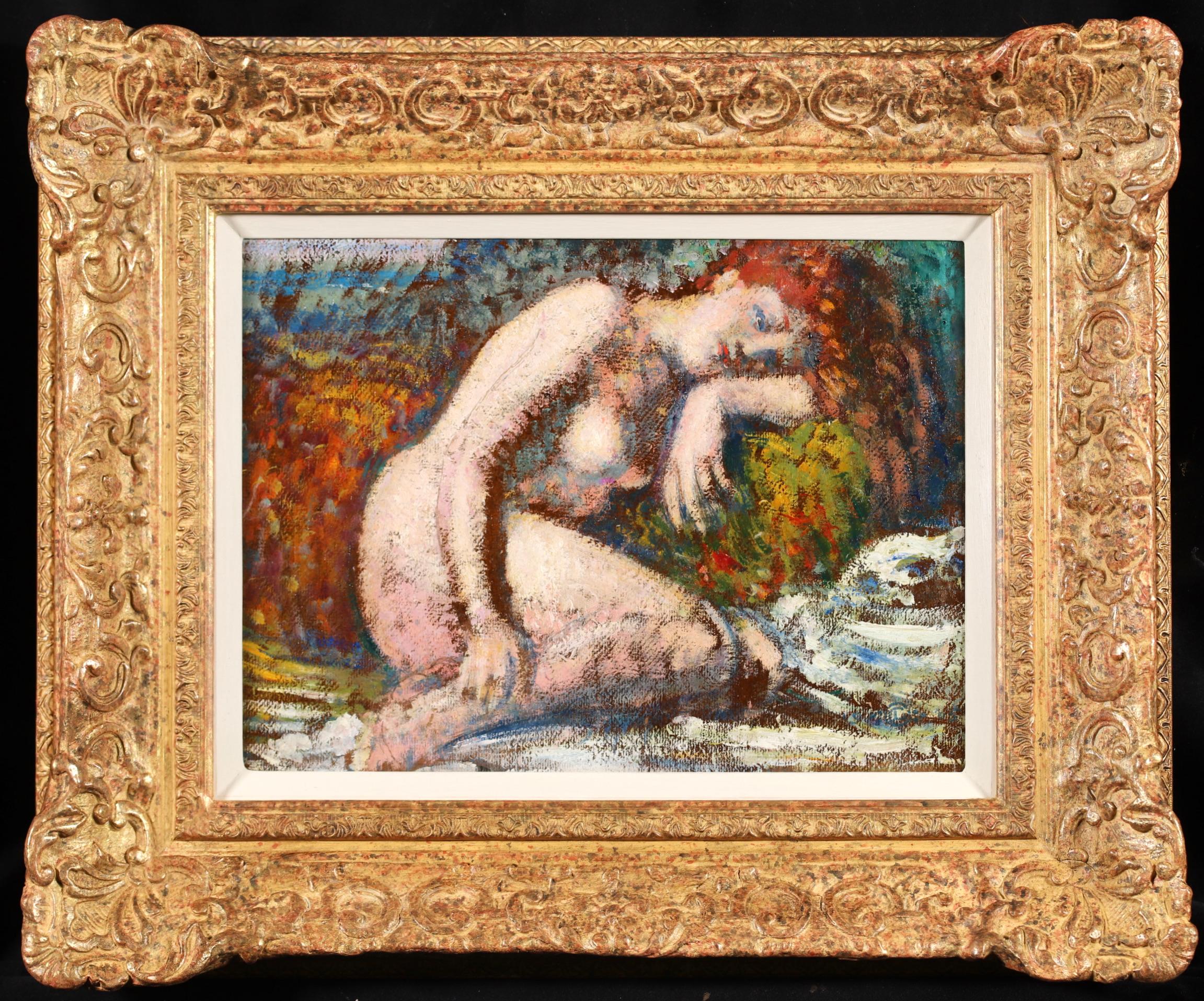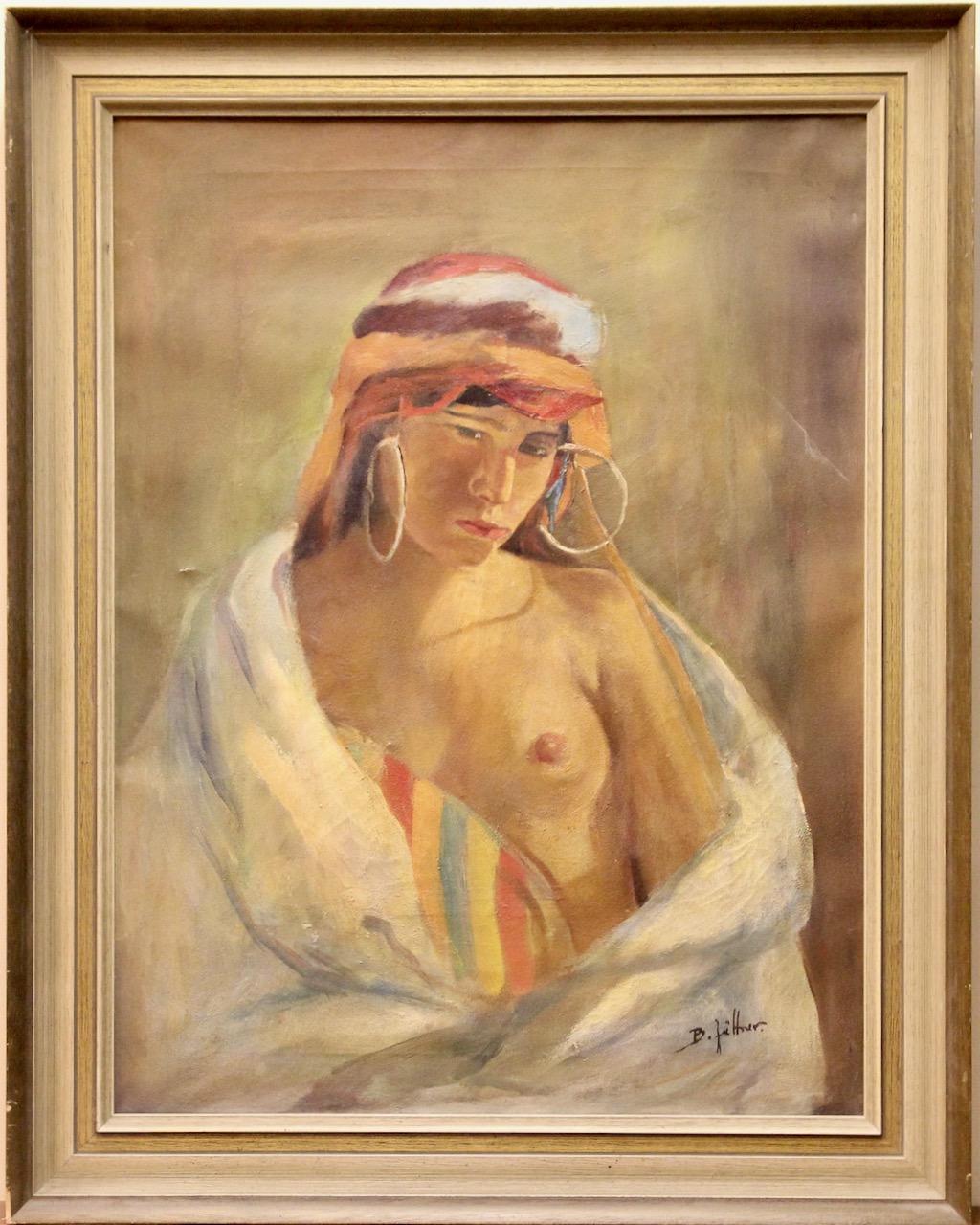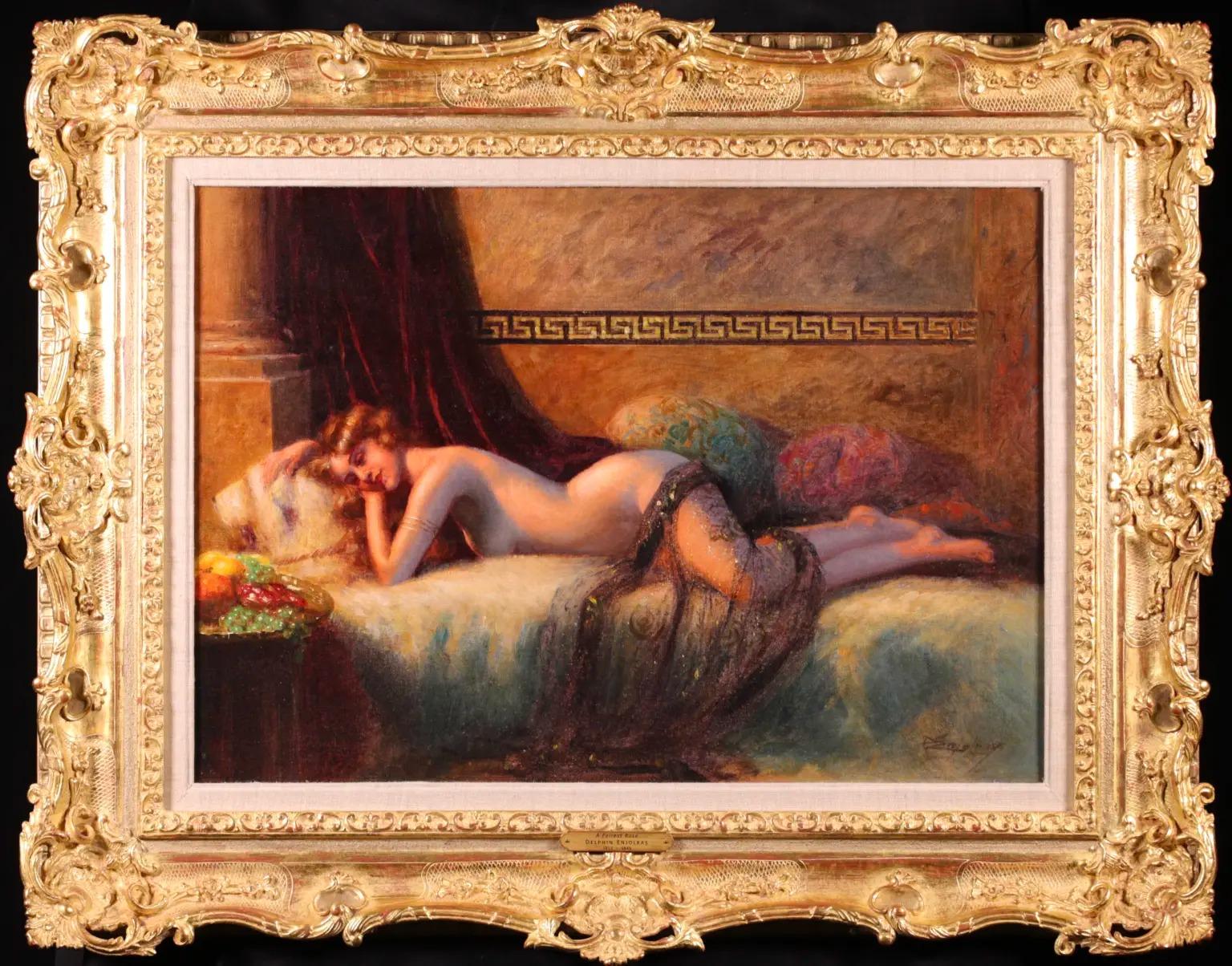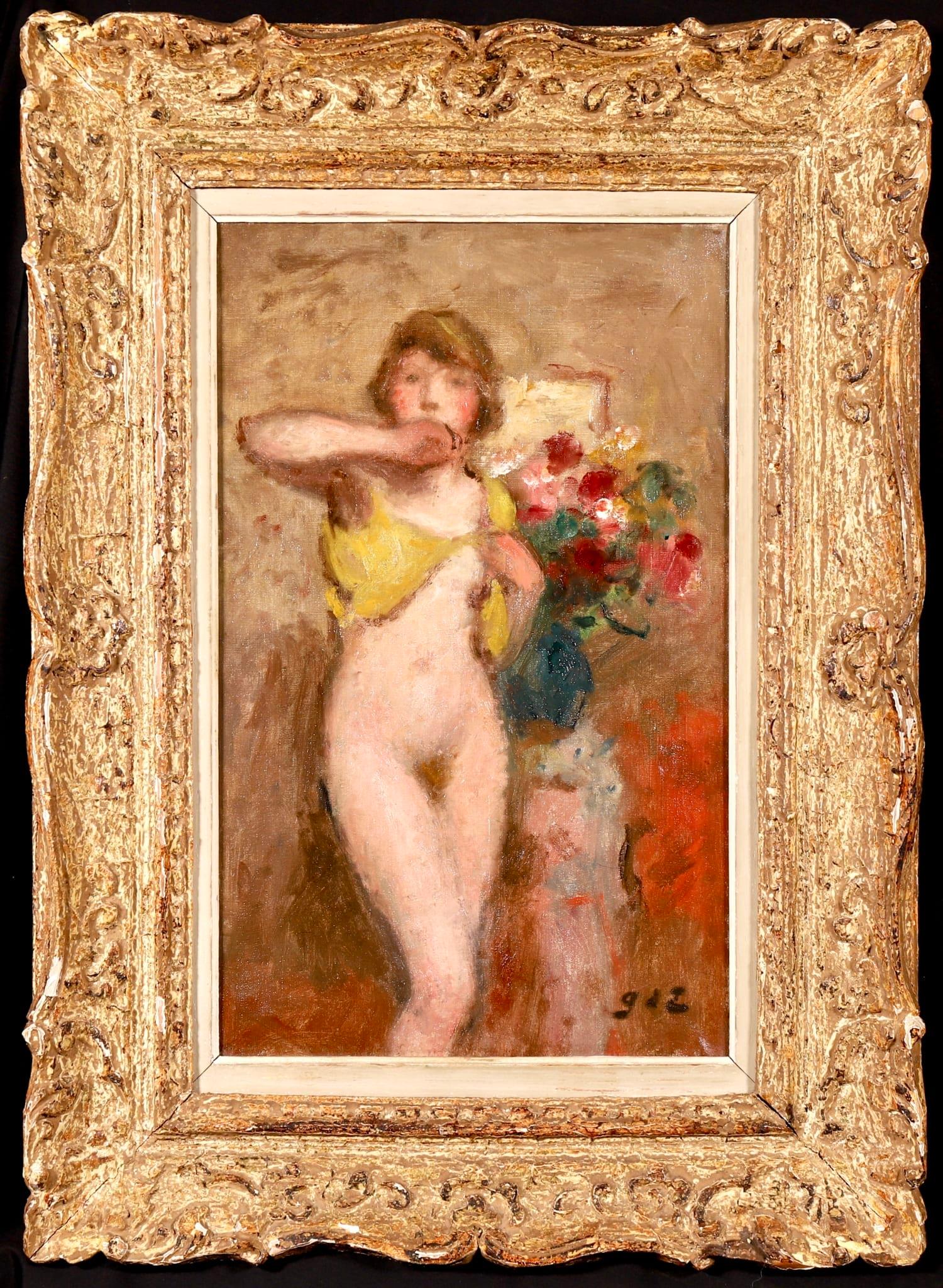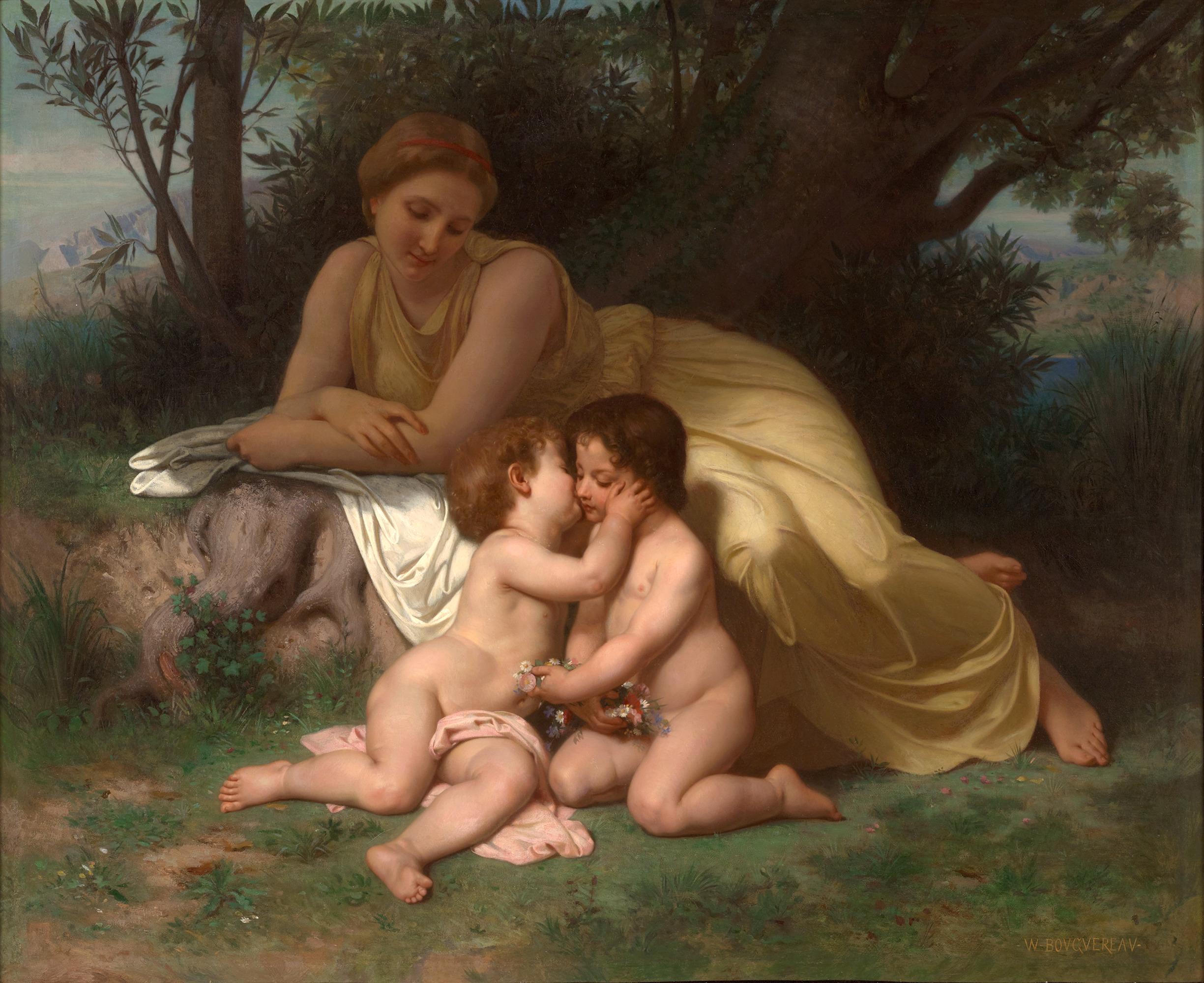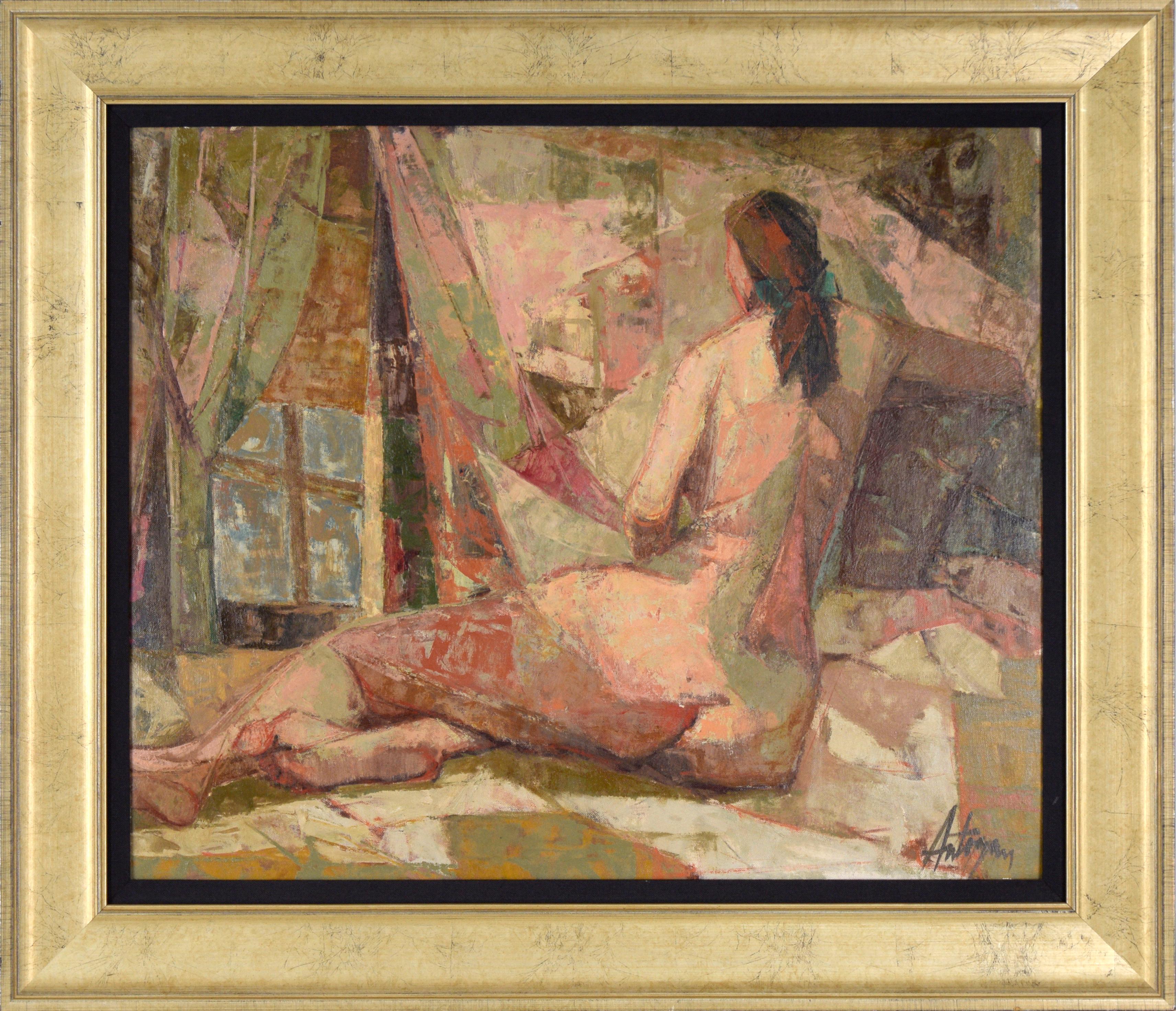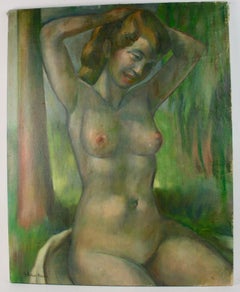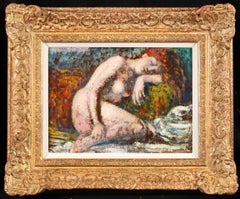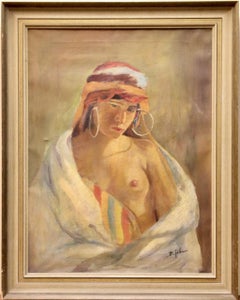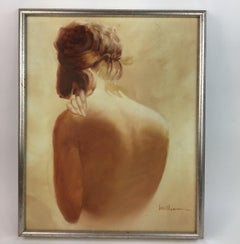
Impressionist Female Nude Figurative Painting 1960
View Similar Items
Want more images or videos?
Request additional images or videos from the seller
1 of 10
UnknownImpressionist Female Nude Figurative Painting 1960
About the Item
About the Seller
4.9
Platinum Seller
Premium sellers with a 4.7+ rating and 24-hour response times
Established in 1970
1stDibs seller since 2003
525 sales on 1stDibs
Typical response time: 4 hours
Authenticity Guarantee
In the unlikely event there’s an issue with an item’s authenticity, contact us within 1 year for a full refund. DetailsMoney-Back Guarantee
If your item is not as described, is damaged in transit, or does not arrive, contact us within 7 days for a full refund. Details24-Hour Cancellation
You have a 24-hour grace period in which to reconsider your purchase, with no questions asked.Vetted Professional Sellers
Our world-class sellers must adhere to strict standards for service and quality, maintaining the integrity of our listings.Price-Match Guarantee
If you find that a seller listed the same item for a lower price elsewhere, we’ll match it.Trusted Global Delivery
Our best-in-class carrier network provides specialized shipping options worldwide, including custom delivery.More From This Seller
View AllAntique French Art Deco Posing Nude 1940
By G. Pascal Rocca
Located in Douglas Manor, NY
3901 Posing Nude a 1940's oil on canvas
Signed Pascal La Rocca
Unframed
Some losses to paint.
Category
1940s Nude Paintings
Materials
Oil
Vintage French Figurative Oil Painting "A Family Man's Fantasy"
Located in Douglas Manor, NY
5150 French oversized Surreal oil on canvas A Man's Fantasy
Framed
Category
1960s Figurative Paintings
Materials
Oil
Vintage Surreal French Female Nude Painting on Canvas
Located in Douglas Manor, NY
5008 Large Vintage French Expressionist female nude on canvas
unframed
Category
1970s Nude Paintings
Materials
Oil
Oversized Nude Male Winged Angel
Located in Douglas Manor, NY
3911 Large Surreal oil painting on canvas of a nude male angel
Category
1970s Nude Paintings
Materials
Oil
Antique Italian Large Figurative Framed Oil Painting of a Reclining Nude Woman
Located in Douglas Manor, NY
5154 Antique Italian oil painting of a reclining nude woman
Framed
Image size 24x36"
Category
1930s Nude Paintings
Materials
Oil
Nude Scandinavian Female Bathers at the Pond 1965
Located in Douglas Manor, NY
3804 Fantasy oil painting nude bathers
Category
1960s Nude Paintings
Materials
Oil
You May Also Like
Reverie - Neo-Impressionist Nude Figurative Oil Painting by Georges Lemmen
By Georges Lemmen
Located in Marlow, Buckinghamshire
Signed and titled oil on board nude circa 1905 by Belgian neo-impressionist painter Georges Lemmen. The work titled 'Reverie' depicts a red-haired lady who is kneeling down and resting her head on her arm.
Signature:
Signed lower right and titled on original artist's label verso
Dimensions:
Framed: 16"x19"
Unframed: 10"x13"
Provenance:
Original artists label verso for Georges Lemmen at 96 Avenue Coghen , Brussels
Private collection - Brussels
Georges Lemmen was the son of an architect and studied under Amédée Bourson at the academy in St Joost-ten-Node. He was invited in 1889 to join the Group of Twenty ( Cercle des XX) which had been launched in 1884 by Oscar Maus and had in the interim emerged as an influential force in Belgian artistic circles, not least by bringing to public and critical attention the work of such artists as Georges Seurat and Paul Signac. The Cercle des XX would be reborn in 1894 as La Libre Esthétique.
In the early days of the Cercle des XX, Lemmen espoused a pointilliste technique. His earlier painting was clearly influenced by the Neo-Impressionists; over time, however, his style became more subtle and nuanced - recalling, perhaps, that of his compatriot Van Rysselberghe, another Cercle des XX member. With the group's rebirth as the Libre Esthétique, Lemmen's work became more intimiste in character, most notably in his portraits, nudes and still-lifes, where the influence of Bonnard and Vuillard is unmistakable, as is that of Renoir, particularly after Lemmen's travels in the Midi in 1911. From this point onwards, he would go on to make a major contribution to the renewal of the graphic and decorative arts in terms of his input to the new 'free' aesthetic and to Art Nouveau. Although his draughtsmanship retained its essential purity and elegance of line, his painting became more fleshy, imprecise and sensual, his compositions governed less by technical considerations than by the urgent need to express his emotions.
Between 1889 and 1893, Lemmen exhibited at the Salon des Indépendants in Paris, aligning himself with the Neo-Impressionists. In 1893, Henry van de Velde invited him to participate in the Pour l'Art association that had been created in Antwerp. He travelled to the south of France in 1911. By this juncture, he had already exhibited solo on two occasions (in 1906 and 1908) at the Galerie Druet in Paris. A further solo exhibition in 1913, his first in Brussels, cemented Lemmen's reputation.
Museum and Gallery Holdings:
Bremen (Kunsthalle): Standing Nude Combing her Hair
Brussels (Mus. royaux des Beaux-Arts de Belgique): Children's Room (watercolour); Reading; Couture; Young Girl by the Sea...
Category
Early 1900s Impressionist Nude Paintings
Materials
Oil, Board
Charles Kvapil, "On the edge of the lake", ca.1920
By Charles Kvapil
Located in Saint Amans des cots, FR
Oil on canvas by Charles Kvapil, France, ca.1920. "On the edge of the lake". with frame: 78x58.5x6 cm - 30.7x23x2.4 inches - without frame: 65x46 cm - 25.6x18.1 inches. 15M format. Signed lower left "Kvapil"
Charles Kvapil was born in Czechoslovakia on November 1, 1884, and died in Paris in 1957.
He takes courses at the Royal Academy of Fine Arts in Antwerp. His first works are exhibited in 1908, at the Salon of Antwerp. In 1911, he exhibits in Munich; his works show a definite cubist influence in a well-tempered, organization and simplification bill. Arrived at a young age in Paris, he sets up his studio in Montmartre in the Hamlet of Artists, between Lepic Street and No. 11 Junot Avenue near those of Utrillo and Valadon; it is there that he will die.
In 1912, he exhibits at the Salon des Independants. In 1914, he presents his works again in Belgium at the Brussels Triennal.
After the war, he lives a very poor life but, with an optimistic temperament, he hopes to break through; he has to work to survive and he paints especially in the evening, especially during his first years in Paris. It is at the Salon des Independants in 1920 that Kvapil is revealed to the Parisian public. He exhibits six paintings: "My campaign", "portrait of woman", "Houseboat", "Poplars", "Bras St. Jean (landscape)" and "Still Life". He is domiciled at 233, rue d'Alésia in Montparnasse."
"In the wake of the legendary figures of Montparnasse, in their shadow, and by them held at a relative discretion (the behavior of artists entering many into the brilliance of their career and the exclusive attachment to their production, without extension" social " " condemning them to darkness), is Charles Kvapil. He frequents the Parnassus café [...] and is exhibited there in a small group organized by A. Clergé, "the Company of professional painters and sculptors", which manifests itself in 1921. The preface is written by Romoff. A second follows shortly. It includes 102 participants, including Friesz, Lagar, Zorate Ortiz, Scouëzec, Astoy, Roysen, Loutreuil, Krémègne, Gallien, Goncharova, Lebedeff, Ramey, Kvapil. He remains attached to the folklore of the Bohemian painter whose Montparnasse is the field of exploits and the model of life "(Jean Jacques Lévêque" The Roaring Twenties, 1918-1939 - The Triumph of Modern Art ", 1992).
He exhibits at the gallery Colette Weill. In 1923, his works are hung at Marcel Bernheim, then at Dalpeyrat, in Limoges, where he shows mostly landscapes. Subsequently, he participates in the Salon d'Automne; to that of 1941, he presents "Phlox", and in 1944 "At the window". In 1951, at the same Salon, he exhibites "Plaisir d'été" and "Le Goûter".
He exhibits during his lifetime in Paris, Munich, Brussels, Geneva, Italy, Stockholm, London and New York.
He is now represented in numerous public and private collections, including the Museum of Modern Art in Paris, the museums of Le Havre, Libourne, Rouen, Saint-Etienne, Amsterdam and Tunis.
Charles Kvapil is known mainly as a painter of characters, especially for his representations of naked women for which his friend Ginette often served as a model; he painted models in the studio, sometimes in front of his window with the Montmartre hill in the background; often bathers or female nudes placed in groups of characters, in the manner of Courbet and the Impressionists at their beginning.
He is also creator of many portraits; but he did not disdain either the still lifes, especially the bouquets of flowers, or the landscapes, which form an important part of his work.
He painted many regions, including Corrèze, where he "knew how to grasp the character of the country that is not his, with his usual mastery" (SSHA Bulletin Corrèze), the Mediterranean coast, Corsica, where he stays regularly in the 1920s and 1930s; in Paris he participated in exhibitions of painters of Corsica in 1925 and 1933. In 1939, at a new exhibition of Art Corse, at the Gallery The Team, still in Paris, he presented two paintings titled "Costa Brugiata, Cap Corsica "and" View of Rogliano ". He is also the creator of "On the Island" (1923), "Querciolo, Rogliano" (1923), "Corsican Woman" (1924), "Landscape of Corsica" (1933) (information Cronica di a Corsica).
Charles Kvapil was influenced by fauvism and a very temperate cubism; Paul Cézanne and to a certain extent Matisse (as a colorist), also marked his style. The desire of construction of the artists of the group to which Kvapil belongs, "did not lead to distortion, except once or twice at Kvapil" .... Kvapil and his friends "thus engaged in thorough technical studies according to the masters, all without exception have loved the beautiful solid and dense material. Their work is related, moreover, not to the classical tradition of transparent painting, but to that of the opaque painting of Frans Hals, Rembrandt and Chardin, almost alone in force since the beginning of the nineteenth century [...] so they paint all in dense pasta but without excessive excess "... (Germain Bazin," the love of art ", 1934).
Charles Kvapil's paintings are original and modern, his nudes and bouquets of flowers are strong and powerful. His palette is rich in cobalt blue and warm colors. His technique is voluntary and powerful. His works in oil are often of modest size, sometimes painted on panels, or on cardboard. He also practiced with great skill the technique of pastel. P. Béran, in a study he has dedicated to him, praises the richness of his material and all that his art owes to the joy of living.
"A work modeled on a life totally devoted to the pleasure of painting. (Jean Jacques Lévêque, ibid.)
He was an indefatigable worker, and this is what he says: "the painter must speak little, but he must comb a lot"
Bibliography
Jean-Daniel Maublanc, Charles Kvapil, painter of figures, 72 p.
Jean-Daniel Maublanc (preface by Louis Parrot), Perspectives - Marcel Lemar, François Eberl, Marcel Roche, Jacques Villon, Charles Kvapil, Charles Jacquemot, Pierre Bach...
Category
1920s Modern Figurative Paintings
Materials
Canvas, Oil
Antique Oil Painting, Bruno Jüttner, Nude of a North African young Lady
Located in Berlin, DE
Antique oil painting, Bruno Jüttner, nude of a North African young lady
Rare half-nude by the well-known German painter.
Age-related condition. A pressure mark in the center left....
Category
20th Century Figurative Paintings
Materials
Canvas, Oil
R.B. FELTRAP, Oil on canvas, Nude, 1937
Located in Saint Amans des cots, FR
Oil on canvas signed R.B.FELTRAP, France, 1937. Nude. With frame : 101.5x82.5 cm - 40x32.5 inches ; without frame : 92x73 cm - 36.2x28.75 inches. Format 30F. Signed and dated "R.B.Fe...
Category
1930s Art Deco Figurative Paintings
Materials
Canvas, Oil
Oriental motif. Oil on canvas, 100x73.5 cm
Located in Riga, LV
Oriental motif. Oil on canvas, 100x73.5 cm
At the turn of the century, the Viennese painter Eduard Ansen-Hofmann (1862-1955) became known with his oriental slave market and harem sc...
Category
Early 20th Century Realist Nude Paintings
Materials
Canvas, Oil
$11,143 Sale Price
20% Off
The foundation of the Hermitage - figurative painting
By Jeroen Allart
Located in New York, NY
A farm stands before you on the horizon. A windmill majestically slices the blue sky. A bird, painted in taut brushstrokes, struts on a branch. These are tranquil images; horizon far...
Category
2010s Contemporary Nude Paintings
Materials
Canvas, Oil, Acrylic
Recently Viewed
View AllMore Ways To Browse
Greek Etching
Midcentury Pop Prints
Photographs Tattoo
Photography Patti
Portrait Of Emperor
Summer Glamour
Surfer Prints
Swimming Pool Photos
Vintage Jewelry Magazine
19th Century Portraits English School
19th Century German Painting Portrait
Black And White Photography The Beatles
Blue Venus
Chagall 1964
David Brown Dress
E Johnson
Glass Sculpture Hanging
Lizard Art
